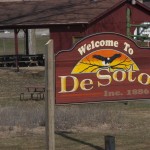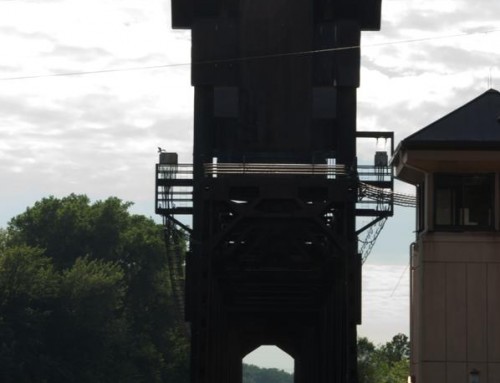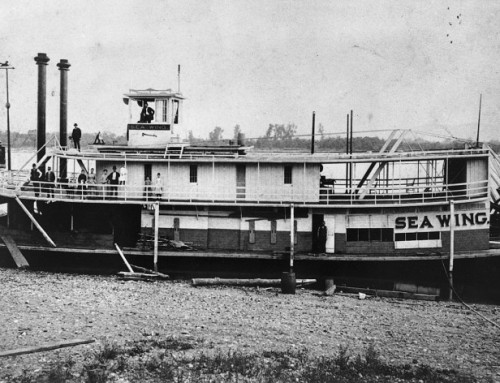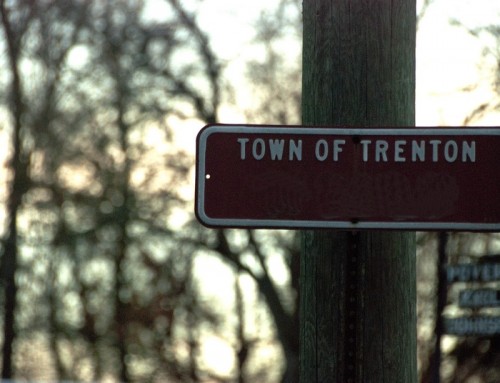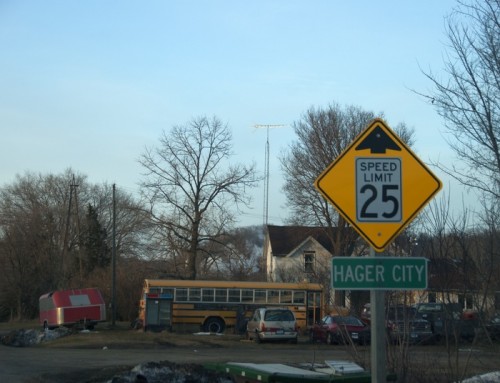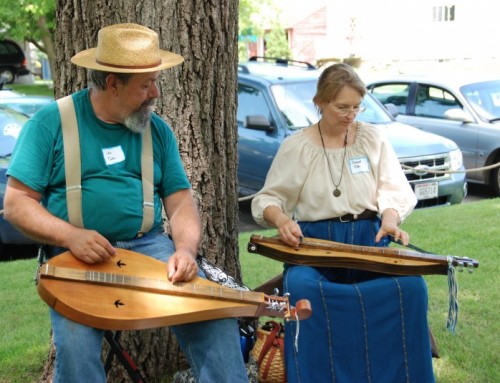Introduction
De Soto is a small river town whose boundaries nevertheless stretch into two counties; river tourism is a major draw.
Visitor Information
Direct your questions to the De Soto Town Clerk during normal business hours (115 Houghton St.; 608.648.2756).
History
Among the early settlers were two French traders named Godfrey who were employed by the Astor Fur Trading Company. Their families farmed and trapped in the area before moving to Prairie du Chien. The village was initially known as Winneshiek’s Landing in honor of the Ho Chunk chief who made regular visits to trade with the French. Chief Winneshiek died in 1848 at Lansing and was reportedly buried atop a bluff just north of town that is named after him.
The village was laid out in 1854 by Moses Strong and renamed for Hernando de Soto, the Spanish explorer who, in 1541, became the first European to see the Mississippi River. The town’s proprietors included several doctors who originally sought to create a village that would be settled only by people who shared their New England roots. The bustling sawmills in the mid-1850s, however, needed laborers more quickly than you can say chowdah, so they had to settle for a more varied group. Most of the new arrivals were Norwegians and Germans. Unlike some of its neighbors to the south, De Soto lacked a good spot for a steamboat landing. Using that famous frontier ingenuity, in 1867 a few dozen men from town used the cover of night to construct a wing dam, which was technically in violation of federal law. The dam, off Woodbury’s Island, was meant to divert the flow of the river so it would dig a deeper channel near the village. It worked. Four grain elevators were soon built and De Soto became an important shipping point for grain, at least until the railroad reached nearby Viroqua and grain shipping shifted there. Shoemaking propelled the town into the national limelight when, in 1884, local cobbler Patrick De Lap was proclaimed the oldest shoemaker in America.
The De Soto Evangelical Lutheran Church was organized in 1896 by thirteen local residents, five of whom were named Ole. Four years later, they built a small Gothic Revival frame church atop Powers Hill on land donated by Ole Nasseth. When the basement was added in 1933, the church became a hot spot for lutefisk suppers. Services, conducted only in Norwegian until 1918, were held once a month on a Monday because of the difficulty of securing a pastor. When the Mississippi River bridge washed out in 1946, the pastor, who was serving congregations in Lansing, Ferryville, and De Soto had to cross the river in a boat—a rowboat, to be precise—which he did for a while before being worn out by the constant back-and-forth. The church was wired with electricity in 1948 but never got running water. The congregation built a new church in 1966 and sold the old church to a local farmer.
Exploring the Area
Sports & Recreation
About three miles north of the village, Battle Bluff Prairie State Natural Area (608.266.5244) is the distinctive bluff with a goat prairie that takes up the entire south slope. There are no groomed trails, and it is a fairly vigorous 25-minute hike to the top, but the views are awesome and it is a great place to watch raptors catching thermals and slowly circling in front of you. From the highway, go one-quarter mile east on Battle Hollow Road; park on the road, then start walking uphill. Stay off the prairie itself; if you don’t kill yourself trying to climb the steep slope, you will probably kill one of the endangered plants that live in the delicate ecosystem.
**Looking for more places to visit along the Mississippi River? Check out Road Tripping Along the Great River Road, Vol. 1. Click the link above for more. Disclosure: This website may be compensated for linking to other sites or for sales of products we link to.
Where to Eat and Drink
The Great River Roadhouse (9660 Highway 35; 608.648.2045) is a very popular stop for food and drinks along the River Road. You can get pizza in just about any form with nearly any toppings, and it goes a long way. I got three meals from a 14” Roadhouse Special (sausage, mushroom, onion, cheese). Broasted chicken is another popular choice. I thought that implied some kind of oven roasting; wrong. It’s just deep-fried in a pressure cooker using a “broaster” probably made in Wisconsin, so I guess that makes it local food. If you still prefer something different, they also have sandwiches and entrées that run the gamut from seafood to ribs to pasta dishes. You will probably have to wait for a table on a weekend evening.
Where to Sleep
Cabins/Houses
J&J Riverview Cabins (121 Crawford St.; 319.826.4967) has five cabins and two apartments equipped with a full kitchen, cable TV, and linens; one cabin is wheelchair accessible.
Scenic View Cabins (S7602B State Highway 35; 608.648.3329) has six roomy, well-maintained cabins in a secluded location above the highway, a larger stand-alone cabin, and a mobile home that is available for overnight rentals. Each unit has a refrigerator and either a regular oven or microwave. From December to mid-March they are essentially closed, but they do keep one cabin available for overnight rentals. They do not take credit cards.
Need a retreat (and who doesn’t really?)? Check out The Cottage (608.244.4556), the perfect spot for up to ten of your friends or a family. The house is beautiful, tastefully decorated, has spacious work rooms for whatever craft you wish to bring along (quilting, scrapbooking, etc.), a full kitchen, screened porches, and comfortable sitting rooms to chat and watch the river flow by.
Murph’s Hideaway (65835 Chandler Rd.; 608.648.2000) has a deep woods cabin feel atop an isolate ridge but in a new building with modern luxuries: full kitchen, dishwasher, microwave, satellite TV, washer and dryer, gas grill, spacious deck, and hot tub; the cabin can comfortably sleep eight people.
Moderate and up
For something completely different, why not stay in a retrofitted railroad caboose? The Coulee Junction Caboose (10414 Coulee Creek Rd.; 708.341.3255) is set on railroad tracks on five acres deep in a coulee and outfitted with nice features like a big deck, a barbeque grill (bring charcoal), a firepit, and hot tub. The interior has wood floors, a fireplace, a kitchen with a microwave; and enough room to sleep four adults, but probably best for two.
Resources
Post Office: 207 Houghton St.; 608.648.3392.
De Soto Public Library: 111 Houghton St.; 608.648.3593.
Where to Go Next
Heading upriver? Check out Victory.
Heading downriver? Check out Ferryville.
Community-supported writing
If you like the content at the Mississippi Valley Traveler, please consider showing your support by making a one-time contribution or by subscribing through Patreon. Book sales don’t fully cover my costs, and I don’t have deep corporate pockets bankrolling my work. I’m a freelance writer bringing you stories about life along the Mississippi River. I need your help to keep this going. Every dollar you contribute makes it possible for me to continue sharing stories about America’s Greatest River!
©Dean Klinkenberg, 2024, 2021, 2018,2013,2011
